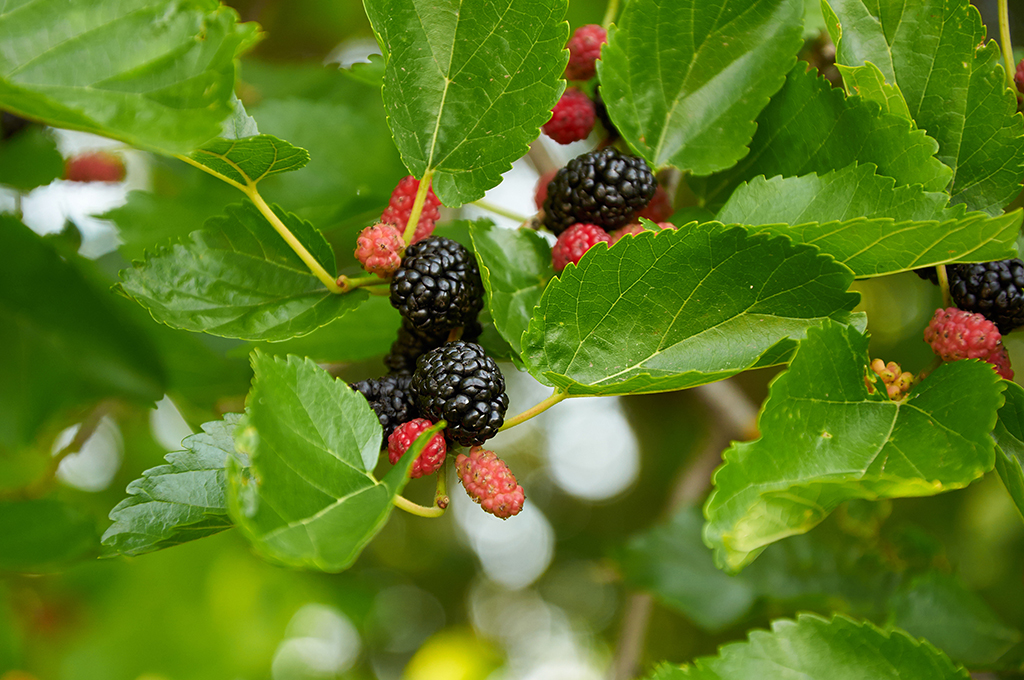A Guide To Caring For Texas Mulberry Trees And Emergency Tree Service | Fort Worth, TX
Photo By Vlad Siaber at Shutterstock
Planting trees in your yard or adding a few well-placed trees to your landscape project can create shade and make your property look more natural. Trees can also help to protect your home from storm damage and halt environmental erosion.
Gardeners should choose a tree species that is right for the climate they live in. There are many things to consider before planting a tree, as planting in the wrong location will stunt its growth and create other issues.
This article will look at the Texas Mulberry Tree, a popular native species producing fruit. If you’re wondering which species of trees to plant or need an emergency tree service, don’t hesitate to contact S&P Tree Service. The company can provide tree pruning, trimming, and removal, as well as stump removal and tree service. Let’s look at how to care for a mulberry tree.
What Is a Texas Mulberry Tree?
There are many different varieties of Mulberry tree, and the Morus Celtidifolia or Texas mulberry is most commonly grown in Texas and other southern states. This species is also called the mountain mulberry, as it can be found growing in the wild on the Texas hillsides. The Texas mulberry belongs to the Moraceae family and is a lovely medium-sized tree that has small green leaves and pale bark. During the spring, Texas Mulberries flower and then produce clusters of tasty, black fruits in May.
Texas mulberry trees grow to between twelve and 36 feet when fully mature. They are a perennial tree that can be grown in a variety of soil types. However, these trees prefer to be planted in dryer locations and do best if they have partial shade. The black fruits will attract wildlife and birds to your yard.
How to Care for a Texas Mulberry Tree
Texas Mulberry trees are relatively easy to grow, even for people who don’t have much gardening experience. These trees are fast-growing and have prolific root systems. It’s essential to plant your trees away from your home, garage, outbuildings, or features such as driveways, paths, and septic tanks, as the tree roots can cause damage.
Before planting any type of tree, it’s a wise idea to consider how large it’s likely to grow. Choose an area where you’ll be able to access the tree easily to pick the fruit and for pruning. This will cause you less stress in the long run. Here are some other things to consider when deciding where to plant a Texas Mulberry Tree:
Sunlight
Texas Mulberries are versatile trees that thrive in most locations. They can be planted in full sun or in partial shade. In general, the more sun a mulberry tree gets, the more fruit it’s able to produce.
Soil Type and PH Range
Texas Mulberry trees are also relatively adaptable when it comes to soil type and pH. They can be grown in clay-like soil, loam, or sandy soil as long as there’s good drainage. These trees are also able to thrive in soils with neutral and mildly acidic pH ranges.
Watering
When you first plant your Texas mulberry tree, it’s a good idea to water it deeply. This will allow the tree’s roots to grow and establish themselves. Continue providing water regularly for the first year.
Once these trees are established, they are considered pretty drought resistant and won’t need to be watered. However, if you live in an area where there is prolonged dry weather, it’s a good idea to water your tree, or it may not be able to produce fruit.
Temperature
Texas mulberry trees are a hardy species that aren’t affected by the cold. They become dormant during the winter when the temperature gets cooler. However, to be able to produce fruit, the temperature needs to be between 68F and 86F.
Fertilizer
Texas Mulberry trees do well on their own and don’t need to be fertilized often. You may like to give your tree a year’s application of fertilizer. It’s best to feed your tree in the winter using a balanced 10-10-10 fertilizer mix.
Does my Texas Mulberry Tree Need an Emergency Tree Service?
There are many reasons that gardeners call on the help of an emergency tree service. The main reason is if the tree is in danger of falling or has branches that look like they may drop. Often when a tree is suffering, you’ll hear a creaking noise and notice movement.
If you have any problems with your tree, stand well back and keep your children and pets away from the tree in case it topples. Call your local emergency tree service for advice.
Trees that have been struck by lightning or suffered from storm damage often split and need to be removed.
Other common reasons that gardeners call an emergency tree service includes:
- Insect infestation, disease, or fungal infections
- Trees that are growing too close to the property need to be removed
- Dead or rotting trees
- Tree or stump removal
- Storm damage
S&P Tree Service, Emergency Tree Service, Fort Worth, TX
If you’re looking for more information about trees that do well in Texas or need tree care advice or an emergency tree service, don’t hesitate to contact S&P Tree Service. The company employs a highly skilled arboriculture team for tree and stump removal, pruning, trimming, and an emergency tree service.
S&P Tree Service is a well established and family-owned and operated. They offer home and business owners tree care, tree installation, and landscaping services. They can also help you decide which species of trees are right for your land.
If you live in Fort Worth, TX, or the surrounding area and are searching for an emergency tree service, don’t hesitate to contact S&P Tree Service today at 469-789-6775.


